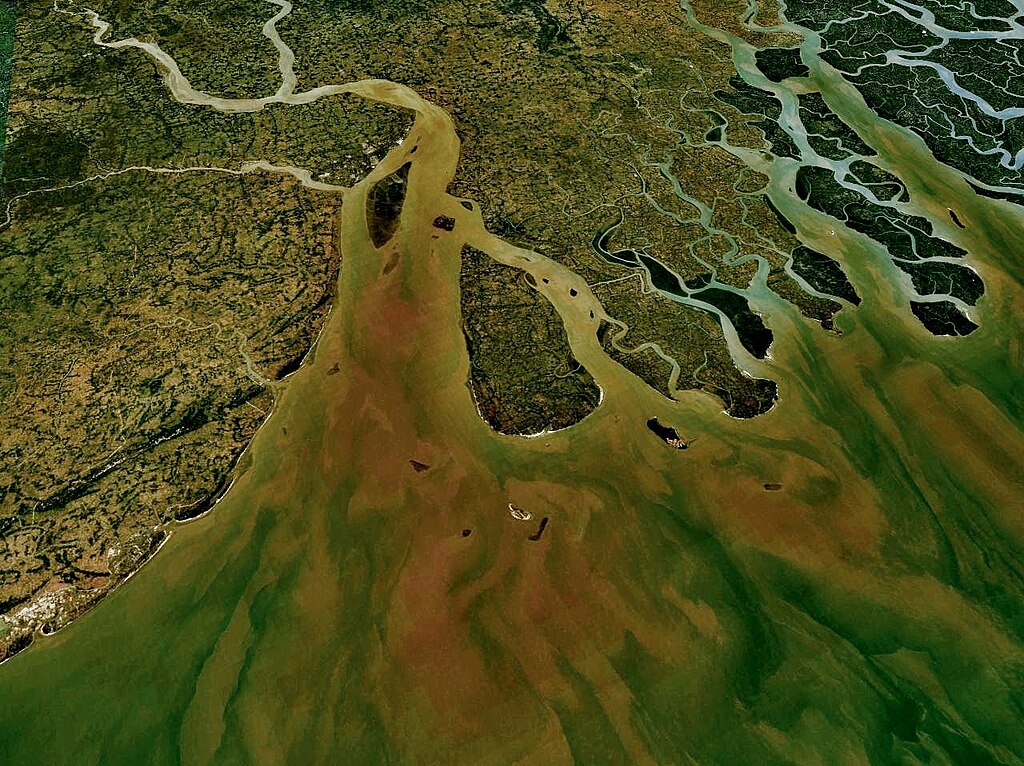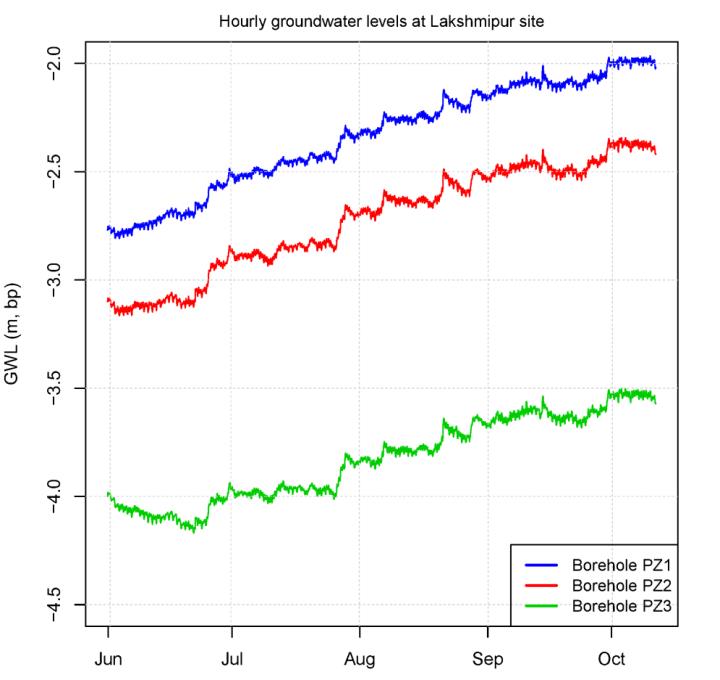Deep groundwater (more than 150 m below ground level) in the Bengal Basin is being increasingly exploited as an alternative to shallow, arsenic-rich groundwater. This study assesses the impacts of abstraction on the recharge and the quality of deep groundwater within the Bengal Basin. Of particular interest are salinity and arsenic (As) concentrations.

The Ganges delta. © NASA.
Key objectives
Key components to this analysis are an improved understanding of:
- the extent of aquifers and aquitards across the basin
- hydraulic connectivity of groundwater at different depths (shallow, intermediate, deep) within deltaic deposits
- the residence times and chemistry of groundwater with depth
Research approach
Field activities
- Correlation of borehole lithologs: borehole lithological data from the Bengal Basin was being correlated to produce a uniform interpretation for hydrogeological analysis and mapping of aquifers
- Installation of data loggers: automatic data loggers were installed in eight nested, multi-level piezometer sites to monitor at high frequency (hourly) groundwater levels at various depths as well as groundwater salinity (Figure 1)
- Groundwater sampling: groundwater samples were collected from multi-level piezometer sites and individual abstraction boreholes to analyse the chemical composition, including As, salinity, stable isotopes and residence time indicators

Figure 1 Hourly groundwater levels in three boreholes at the Lakshmipur site in Bangladesh. Note: data not corrected for atmospheric pressure and water density. BGS © UKRI.
Analysis of climate change models
Climate change projections from multi-model ensembles compiled under the fourth and fifth assessment reports of the Intergovernmental Panel on Climate Change (CMIP3; CMIP5) were assessed to evaluate changes in rainfall intensity — a key influence on recharge — over the Bengal Basin for three future epochs, representing the early (2021 to 2050), mid (2035 to 2065) and late (2070 to 2099) 21st century. This will enable assessment of the projected impacts of climate change impacts on storage and quality of the deep groundwater resource.
Project team
The case study involved researchers from BGS and:
Further reading
Taylor, R G, Burgess, W G, Shamsudduha, M, Zahid, A, Lapworth, Dan, Ahmed, K, Mukherjee, A, and Nowreen, S. 2014. Deep groundwater in the Bengal Mega-Delta: new evidence of aquifer hydraulics and the influence of intensive abstraction. British Geological Survey Open Report OR/14/070. (Nottingham, UK: British Geological Survey.)
Contact
Please contact Alan MacDonald for further information.

